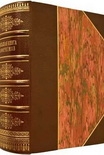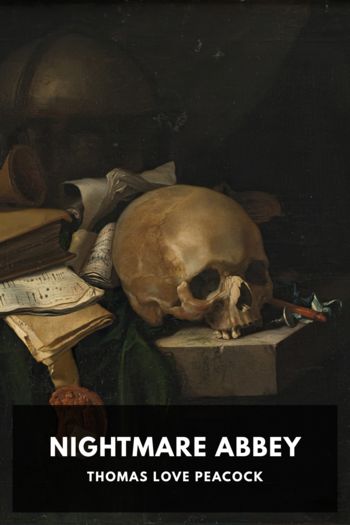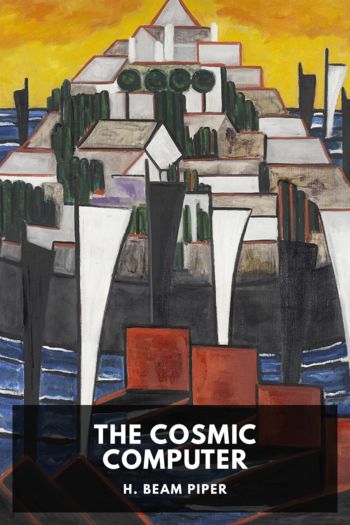Gluck, Diana Souhami [good novels to read in english txt] 📗

- Author: Diana Souhami
Book online «Gluck, Diana Souhami [good novels to read in english txt] 📗». Author Diana Souhami
Both Edith and George shared a vigil over Yeats’s body the night after he died on 28 January 1939 at the Hôtel Idéal Séjour in Menton in the south of France. ‘… I watched over him until 4a.m.’ Edith wrote (26 August 1968). ‘His features had become even more noble and beautiful than I had known them. It was a wonderful southern night of stars and I remembered that “the heavens themselves blaze forth the deaths of princes”.’11 To commemorate him Edith put a plaque on the wall of Chantry House: ‘William Butler Yeats 1865–1939 wrote many of his later poems in this house’.
Edith was generous, appreciative and nurturing of talent. Her book reviews, too, were receptive, informed and filled with insights. She gave to Gluck the same loyalty and devoted appreciation that she had given to Yeats. She thought her gifted, referred to her genius, and made allowances for her impossible temperament. Gluck noted in her own diary a comment, that perhaps alleviated her guilt over her own difficult behaviour, made by Yeats to Edith: ‘We who create have to cultivate our wild beasts; most people have to subdue them.’ The theatre critic and diarist James Agate, who knew Edith well, wrote in his Ego diary volumes ‘Edith is a tower of sympathy to people in trouble and spends her quick and noble mind generously.’12 The writer, Anne Scott-James, whose parents often used to stay at the Chantry, until Gluck moved in, describes Edith as an intellectual and a good conversationalist. People thought her reserved, rather self-effacing, with a droll sense of humour, and given to making pithy asides. She remarked, for example, as a dull, newly married couple left a tea party at the Chantry, ‘How nice that they’ve married each other, and not one of us.’ And James Agate recorded lunching with her and the publisher Alan Dent at the time of Edward VIII’s scandal with Mrs Simpson, and Edith commenting: ‘Peter Pan is a charming play for children. It is not a rule of conduct for a great nation.’13 She had a kittenish, mischievous smile when saying such things, so Edmund Dulac nicknamed her Kokoscha (Russian for little kitten). He did a drawing of her to capture that expression.
Gluck entered the sisters’ intellectual, civilized world five years after the death of Yeats. Nora evidently had reservations about the ménage à trois from the time when Nesta called in to see her at The Lady offices in September 1944. Edith was adamant at wanting Gluck to live with them and thought it would work out. For Gluck, whatever her feelings about Edith, the move seemed to offer solutions to her problems. It took her away from the pain and disappointment of her relationship with Nesta and it resolved her struggles with the Trustees over the upkeep of Bolton House. Bolton was sold, after a few more rows, in 1945 to a Dr Martin Pollock of the Medical Research Council and the money reverted to Gluck’s Trust. But she kept on the studio and had a wall built at the end of the paved garden, at a cost of £50, to separate it from the house.
Gluck felt, too, that Chantry would provide an atmosphere conducive to work. Here were professional women who had made their own way, depended on no one else’s money and had earned their success. It was away from the West End whirl, the Meteor’s pressures, Nesta’s dilettantism. Here was solid professionalism where she could, above all things, work.
She moved in on 6 October 1944 still smarting from Nesta’s ‘beastly about me’ visit to Nora the week before. She brought with her, her Broadwood piano and mahogany four-poster bed, seven-foot long, five-foot six wide, with reeded columns. The Yeats’ Room was cleared as her study and a cottage in the grounds became her studio. She wrote a letter to Nesta cancelling a proposed visit to the Mill House. Nesta replied and sent a copy of whatever she wrote to Nora, which upset Gluck a great deal. For a few days after moving in, Gluck felt terrible with heart palpitations and what was probably an anxiety attack, but it passed and she declared herself happy.14
Friends of the Heald sisters from the outset expressed discomfort at Gluck’s arrival. The atmosphere quickly became awkward and their visits tailed off. In 1945 Gluck endured a kind of breakdown, diagnosed as neuritis. She went to a private rest home in Middlesex. Rayner Goddard, who the following year was to become the Lord Chief Justice, had written to her on 24 January asking her to accept a commission from him to paint Wilfrid Greene. He intended presenting the picture to the Inner Temple. ‘I of course leave everything to you, but I confess that I should like nothing so much as a replica in oil of the drawing – it was so excellent a likeness and I could see every side of his character in it. At any rate you will give me something as good won’t you?’ Because of illness Gluck had to postpone the sittings and did not deliver the picture until 1949.
On first arriving at the Chantry, Gluck did little but try to get strong and adapt to her new circumstances and to separation from Nesta. The initial friction and resentment at parting passed, and the deep loyalties resurfaced. Gluck was never far from Nesta’s thoughts or affections. With the war over, Nesta and Seymour resumed their travelling life. In New York she visited the actress Leonora Corbett, who had moved there toward the end of the war. ‘The first thing I saw when I went into her bedroom was “The Glory of Mud” looking beautiful’, Nesta wrote to Gluck. This was a seascape, of which there is now no trace, done in Dorset in the 1930s, on an island they called their Shangri La. ‘You can imagine





Comments (0)